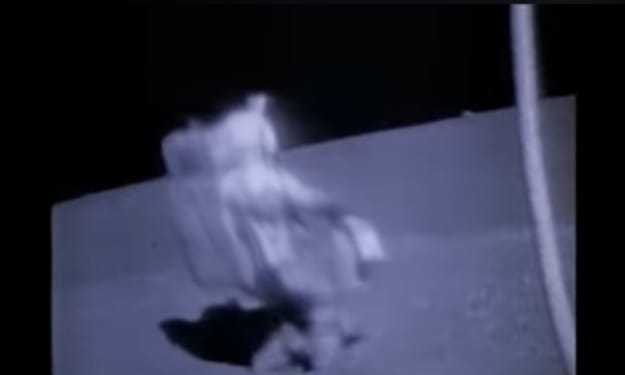
Twin astronauts agree to participate in a study on their 20th birthday. Stella will board a spacecraft while Terra stays on Earth. After visiting a star located 10 light-years distant, Stella's ship will next fly back to Earth at 86.6% the speed of light. The twins ponder what will happen when they are reunited as they are ready to part ways. Stella's journey should take 23 years because a light year is exactly the maximum distance that light can travel in one year. The twins understand it's not that easy because they studied special relativity, though. First of all, compared to a stationary observer, an object moves through time more slowly the faster it goes through space. The Lorentz factor, which is determined by this equation, can be used to quantify this relationship. And secondly, the length of a moving object will shorten by the same amount when observed by a person standing still. The Lorentz factor is 2, which means that time will move twice as slowly inside the spacecraft at 86.6% the speed of light. Stella won't likely notice that time is passing more slowly. This is because Stella's biological activities, such as her rate of aging and her sense of time, would all slow down along with all other time-based operations in the ship, including clocks and electrical gadgets. Only observers in an inertial, or non-accelerating, reference frame, such as Terra back on Earth, would be able to detect that time was going more slowly for Stella. Terra deduces that she will be older than Stella when they reunite on Earth as a result. But that's only one perspective on the situation. Stella contends that since all movement is relative, it would be as true to state that her spaceship will remain stationary while the rest of the cosmos, including Terra, travels around it. In that scenario, Terra's time will move twice as slowly, ultimately making Stella the elder twin. Which one is correct since they cannot both be older than the other? This seeming contradiction is referred to as the "Twin Paradox." However, it is merely an illustration of how special relativity can be readily misconstrued and is not really a contradiction. Each of the twins agrees to transmit a light burst to the other each time a year has passed for them in order to test their theories in real-time. The speed of light, in contrast to other objects, is consistently constant regardless of the observer's reference frame. Regardless of whether it is traveling within or outward, a light burst transmitted from Earth will be measured at the same speed as a light burst delivered from the spacecraft.Therefore, when one twin notices a burst of light, they are also calculating the time it took for light to travel between them and the other twin to perceive a year passing. On a graph, we may observe what is happening. The Y axis measures time, and the X axis measures distance from Earth. From Terra's viewpoint, her path will simply be a vertical line with a distance of zero and each tick on the line representing a year in her perception. Stella's journey will diverge again at zero distance and in 23 years from the same origin, after traveling for 11.5 years in time and 10 light-years from Earth. Terra will launch a light pulse from Earth toward Stella's spacecraft at the one-year mark. Given that light travels one light-year in a year, its path will be a 45° diagonal line. Stella is moving away from it, so by the time the light gets up to her, Terra will have aged more than seven years overall while Stella will have aged more than four. Stella will already be on her way back when she witnesses Terra's second blast. She will be able to watch the bursts more frequently since she is going closer to the light source, where it will arrive faster. Accordingly, Stella sees Terra aging gradually for the first half of her journey and aging quickly for the second. Stella, on the other hand, perceives that the universe, Terra, her destination star, and herself are all in motion. Stella notices a two-fold reduction in the space between them as a result of length contraction. This implies that each leg of the journey will only take Stella around six years to complete. Two years will have elapsed for Terra by the time she transmits the initial signal to Earth. During her outward journey, Stella will send four additional light bursts, each coming from a greater distance. Over 21 years will have passed by the time Terra sees Stella's first pulse from her incoming trek. Terra continues to have many light flashes every year for the duration of Stella's journey back home. As a result, over the course of their 23 years apart, Terra sees Stella age gradually for around 90% of that time and quickly for the final 10%. The dilemma isn't actually a contradiction because of this asymmetry. whereas both twins view time moving more quickly and more slowly for the other, Stella sees an even split, whereas Terra sees Stella aging more slowly for the most of the time they are away. This is in line with the twins' estimates of the length of the space journey, which is 23 Earth years on average but only 11.5 aboard the ship. Terra will be 43 years old and Stella will be 31 when the twins are reunited. Stella made the mistake of assuming that she and Terra had an equal right to be inertial observers. One must maintain a constant speed and direction in relation to the rest of the cosmos in order to be an inertial observer. Terra had a steady zero velocity because she was at rest the entire time. Stella, however, entered a different reference frame from the one she had started in when she altered her course for the return trip.Stella and Terra are now more aware of how spacetime functions. They are also a perfect illustration of special relativity because they are identical twins who are eleven years apart in age.
About the Creator
Niks
I deliver Informative content.






Comments
There are no comments for this story
Be the first to respond and start the conversation.